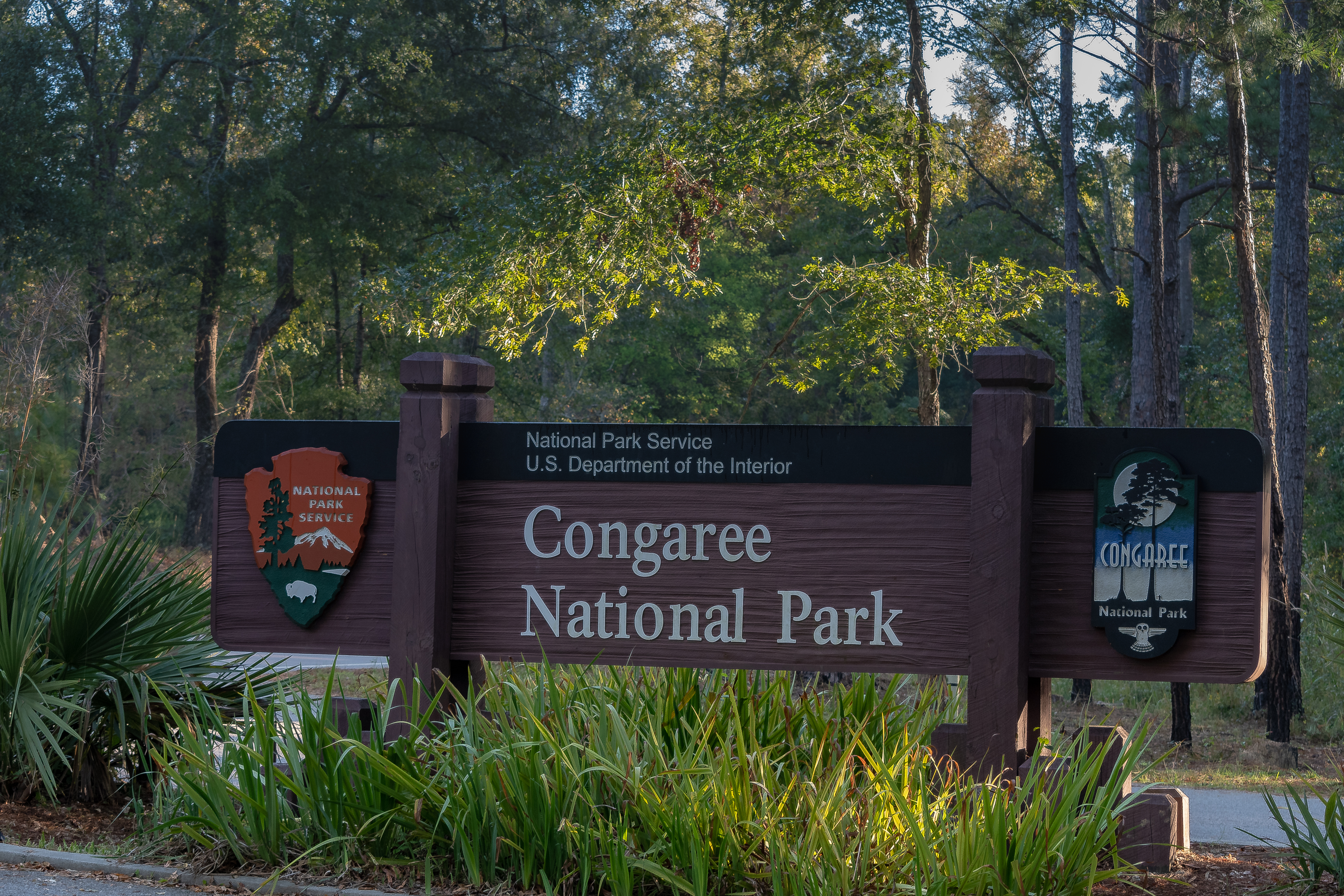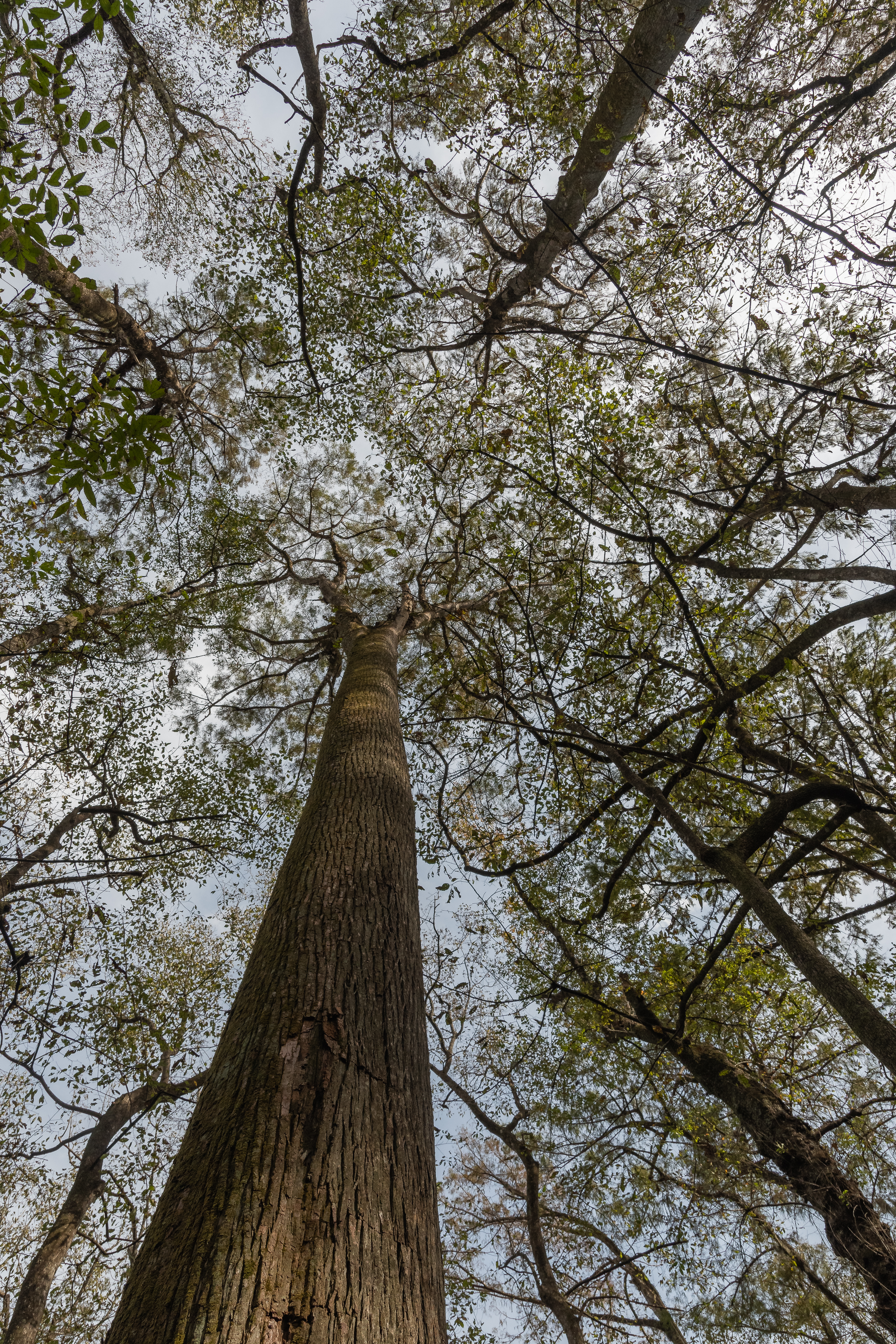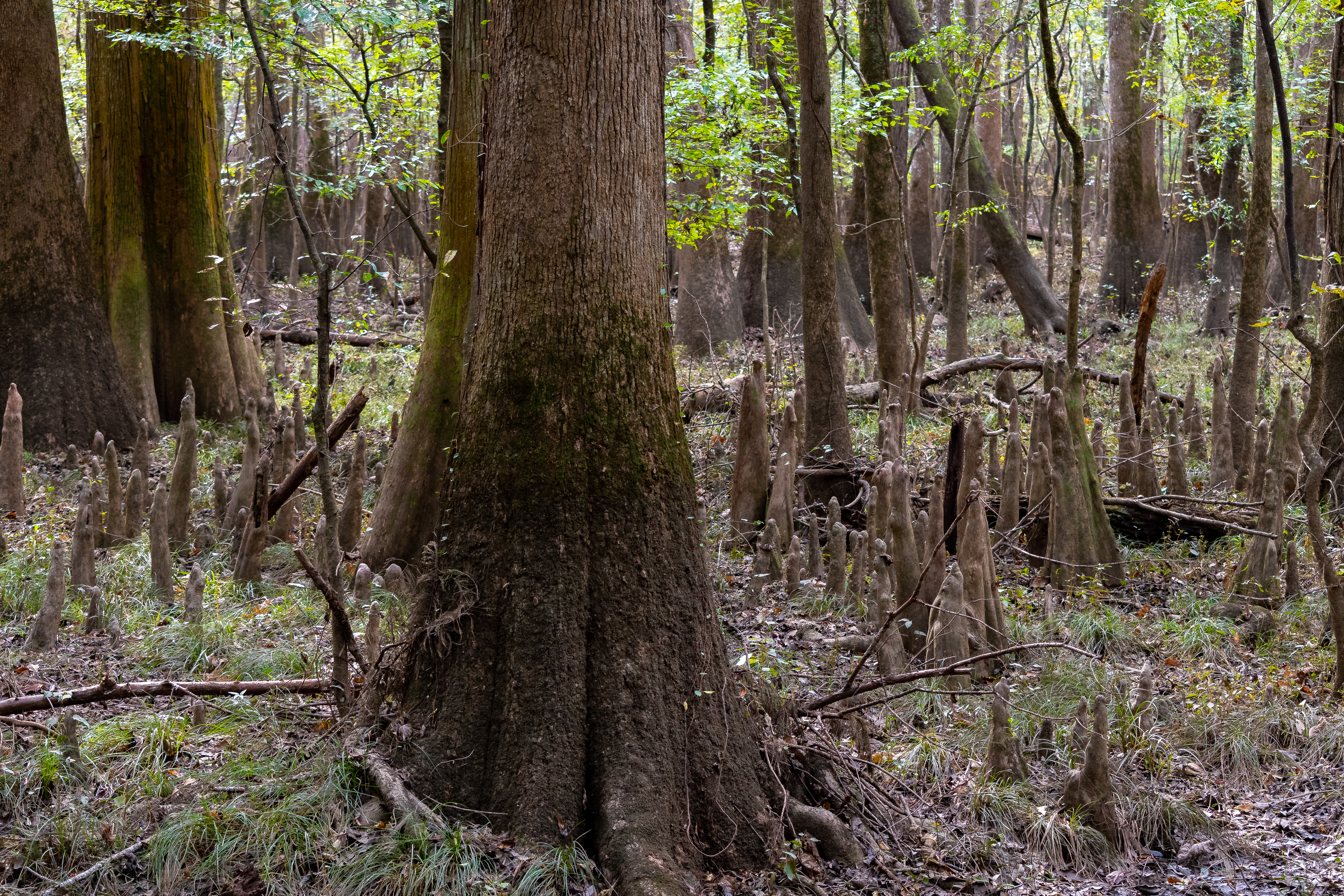Not far from Columbia, SC is Congaree National Park. It is an old growth bottomland hardwood forest notable for the overall height of its forest canopy and the number of its national and state champion trees.

Waters from the Congaree and Wateree Rivers flood the bottomland several times each year and nourish this unique ecosystem. Forested wetlands, oxbow lakes, slow-moving creeks, and sloughs provide habitat for fish, birds, amphibians, reptiles, mammals, insects, and other aquatic life. Our favorite trees were the bald cypress, tupelo, and loblolly pine.

My magic trick…..suspended leaf without a spider web. I really didn’t see anything holding it up.

The Congaree NP canopy averages 130 ft in height, with individual trees as tall as 170 ft. It is one of the the highest deciduous forest canopies in the world.

Bald Cypress Trees. The small pointy things are called “knees” and are part of the bald cypress root system. Scientists aren’t sure what they do. Two theories are that they provide air to the roots during the frequent floods and/or enhance the trees’ stability in the soggy soil.

Cedar Creek winds through the park and is visible from the most popular trails.
While hiking the Oakridge Trail I encountered wild hogs, wild turkeys, fox squirrels, and numerous grey squirrels. I wasn’t able to get any pictures of the wildlife, except the grey squirrels. For all of the others I just saw their backsides heading away from me.
Congaree is a fun park to visit and an ecosystem we had never seen before. Next time we hope to be able to kayak into part of the park. Storm damage from Florence and Michael was still being cleaned up when we were there, making a kayak trip too risky.